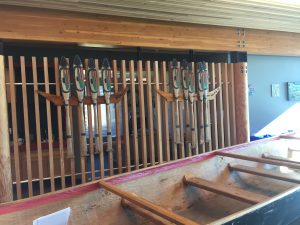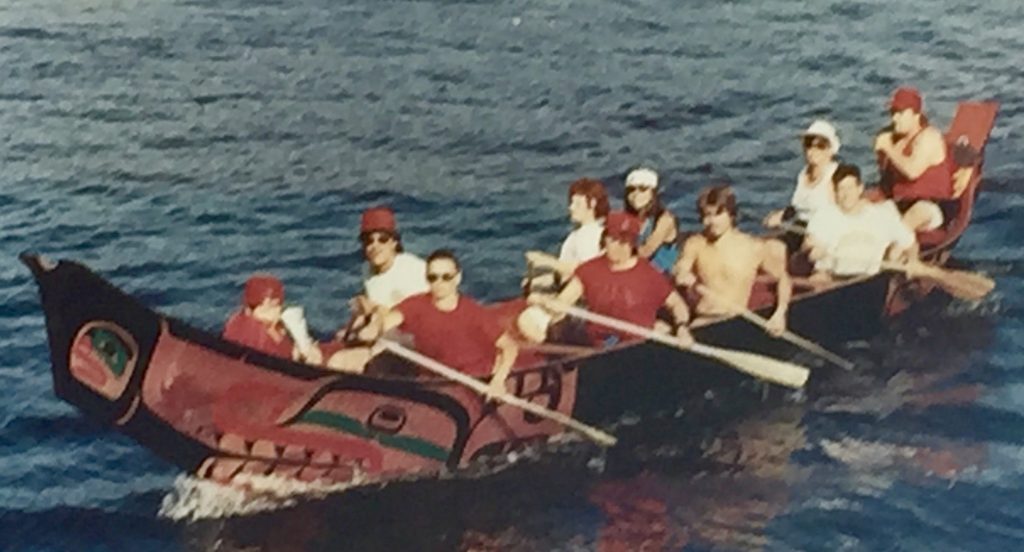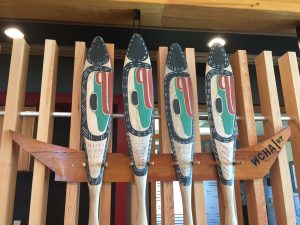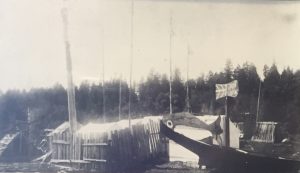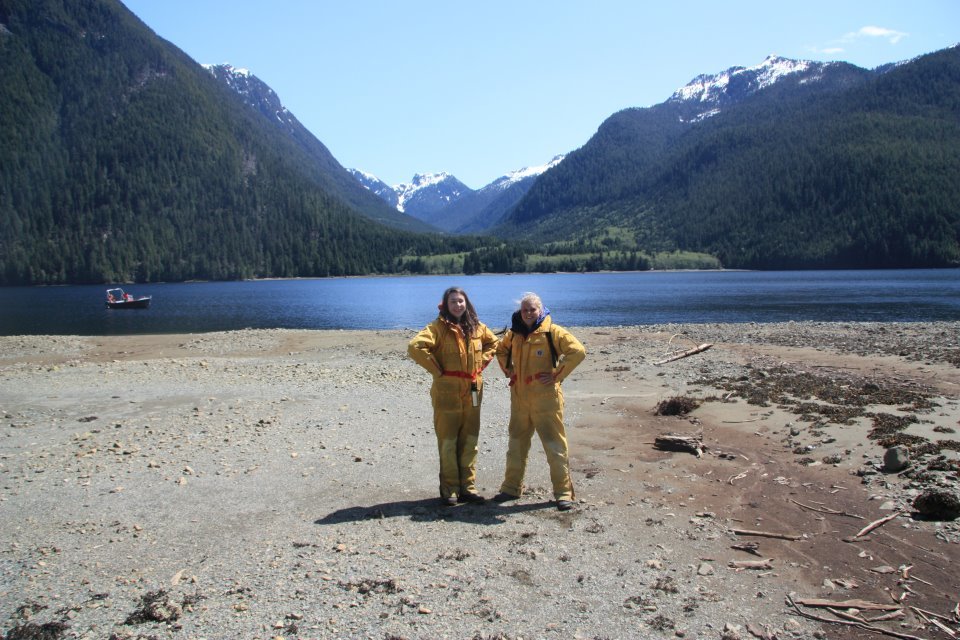Visiting the K’ómoks First Nation: The I-Hos Canoe and the Importance of Culture
When you walk into the cultural centre of the K’ómoks First Nation, the first thing you are greeted with is a giant canoe. I’m not talking about your typical summer-camp canoe, where three or four people sit in a plastic or fibreglass little boat and paddle around a lake. This canoe is absolutely massive, and a complete work of art.
The I-Hos canoe is 32 feet long, and weighs over 300lbs. It was carved from a 437 year old red cedar tree, which was donated to the K’ómoks First Nation in 1994, and blessed by Elder Mrs. Mary Clifton. Carvers Calvin Hunt and Marvin Child, along with several K’ómoks community members, then set to work carving it into a masterpiece, the first canoe to be carved on the K’ómoks reserve in over 80 years.
The imagery on the canoe is of a Sisitul, which is a double-headed sea serpent. The Sisitul keeps those in the canoe safe from evil spirits, and is a powerful and recognizable crest among First Nations of the Pacific Northwest. The unique carvings make the I-Hos canoe stand out, and it is recognizable everywhere it goes.
The I-Hos goes on Tribal Journeys, an annual event where First Nations communities from all over the Pacific Northwest paddle to a set destination, which changes every year (check out the Facebook page for this year’s event, set to take place this summer and finish in Puyallup, Washington). The I-Hos has a crew of 11 or 12 pullers, and one helmsman. During the days-long journey, the participants (or “ canoe-family”) visit neighbouring nations, where they share culture, dances, songs, and food. In the past, the I-Hos has travelled as far away as Bella Bella (about 700km!), but its first journey was to right here in Victoria for the 1994 Commonwealth Games.
Why is a canoe so important? It’s a connection to tradition, and to history. It allows the youth of the community to be taught values from their Elders, and then pass those on to future generations. Tiffany Gee, who is the youth coordinator for the K’ómoks First Nation, told me that this generation is “crying out for culture. Period.” Culture can provide a connection to the past, whether through language, customs, artifacts, stories, or memories. When you have been denied your culture for generations, every little bit is critical.
When it comes to many First Nations cultures, teachings come from the Elders giving. By giving knowledge to someone, you are practicing your culture. By participating in Tribal Journeys in the I-Hos Canoe, community members are passing along knowledge, and showing true pride in their heritage.
During my visit to K’ómoks, I asked Tiffany how students at UVic can be mindful of the cultures of those who have lived here since time immemorial. She told me that remembering history and being respectful are the best thing students can do. It came down to the tenet of respect – for history, for nature, and for each other. For example, acknowledging the territory can remind us how we came to be here, and the people who lived here before us.
Recycling, composting, and living a sustainable lifestyle are all ways to respect the land. And being kind to others, standing up against bigotry, and trying to walk a mile in someone else’s shoes are ways to be respectful of each other. These are all ways that we can respect the culture of First Nations like K’ómoks.
For more information on UVic’s Indigenous Focus, click here.

